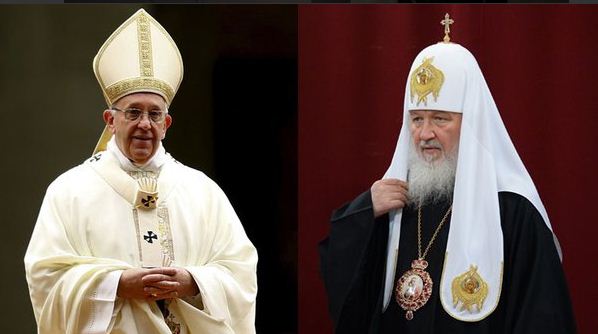Alluded addition, it is the first meeting since the Schism of East and West (also Great Schism) occurred in 1054, where the first permanent rupture of the Christian community took place. And here one obvious question, what does the word schism means, and what was its scope in the history of mankind?
The term “schism” means “separation.” And in this case, it is the separation of the pope and Western Christendom, of Christianity and Eastern patriarchs, especially the Ecumenical Patriarch of Constantinople.
The rift between the two churches began to take shape since the Emperor Constantine the Great decided to move in 313 A.D., the capital of the Roman Empire from Rome to Constantinople.
It practically begins when Theodosius the Great divided his death (395) the Empire into two parts between his sons Honorius, who is recognized emperor of the West, and Arcadio, Eastern.
Let noted from the fall of the Western Empire to the barbarians of the North in 476; It is worse in the ninth century by Photios, patriarch of Constantinople and definitely eat in the eleventh century with Michael I Cerularius also patriarch of Constantinople.
Now, what are the causes that led to schism ?, researchers and historians recognize three essentially:
1. Ethnic type: The natural antipathy and animosity between Asia and Europe, together with the contempt they felt at that time Eastern Christians toward Latinos, whom they considered barbaric infected because of the Germanic invasions.
2. religious: Variations, with the passage of time, were imposed in liturgical practices, leading to the use of different calendars of saints; continuing disputes over the episcopal and patriarchal jurisdictions that originated from the Empire divided into two; Review spread throughout the East that, being transferred the imperial capital from Rome to Constantinople, had also moved the seat of the Primate of the Universal Church; the claims of authority by the patriarchs of Constantinople, who used the title “Ecumenical” despite the opposition of the popes, who claimed for themselves as bishops of Rome, the supreme authority over all Christendom; the refusal of the patriarchs of the East to recognize that authority on the basis of the Apostolic Tradition and Sacred Scripture, claiming that the bishop of Rome could only pretend to be “primus inter pares” (first among equals one); and interference of the emperors in church affairs, believing popes and kings, and trying to decide themselves the serious problems of the Church.
3. political nature: The popes sought support in the Frankish kings and renovation of the Western Empire Charlemagne (ninth century) dwindled prestige to the emperors of the East, who had pretensions to the reunification of the old Roman Empire.
Who were the protagonists of this fact?, it is stated that the authors are involved as such, and the defenders of the unity of the Church and the primacy of Rome.
Schism in the authorship of the Sot participated Miguel III (838-867), Emperor of the East (last of the dynasty of the Isaurians); Caesar Bardas, uncle of the emperor and regent of the empire during his minority; Gregorio Asbesta, Metropolitan of Syracuse; Photios, secretary of the Imperial Chancellery, and Miguel Cerulario, Patriarch of Constantinople.
As defenders of the unity of the Church, include Nicholas I, Hadrian II, John VIII and IX León potatoes; Ignatius, patriarch of Constantinople and the empress Theodora, mother of Emperor Michael III and Bardas sister.
From that moment until today, they both call themselves Roman Catholic Church and the Orthodox Catholic Church and also claim exclusivity of the formula “One, Holy, Catholic and Apostolic Church”, while each is considered as the only legitimate heir of the early Church founded by Christ and attributed to the other the “abandoning the true Church.”
However, disagreements and controversies known some efforts to achieve a rapprochement between Catholics and Orthodox. In 1274 a first approach will took place on the occasion of the Second Council of Lyon and in 1439, the Council of Basle was made, but both attempts failed for mutual intransigence in some doctrinal and disciplinary aspects.
In recent times, some Eastern Churches decided to accept the absolute primacy of the Pope and now called Eastern Catholic Churches.
Following the Second Vatican Council, convened in 1962 by Pope John XXIII and closed by Paul VI in 1965, the Roman Catholic Church undertook a series of initiatives that have led to the rapprochement between the two Churches.
There may be mentioned the joint declaration of 7 December 1965, in which Pope Paul VI and Ecumenical Patriarch Athenagoras I decided to “cancel the memory of the Church the sentence of excommunication which had been pronounced”.
However, these large events have not changed the real situation of each church, for the schism remains. In addition, unprecedented travel Patriarch and the Pope was the result of the suppression of historical obstacles.
This has led to a dialogue between the two churches for the first time in 900 years, whose attempts at mutual understanding between Catholics and Orthodox offer hope of reconciliation.
Translated by: Daysi Olano Fernandez


